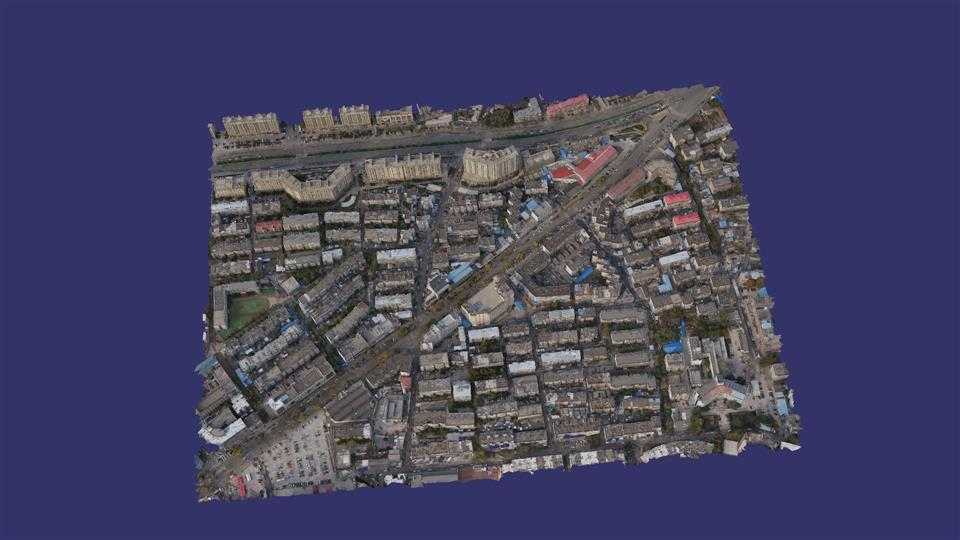标签:last pre har 金字塔 || tput amp 数据 list
ContextCapture(Smart3D)生成的倾斜摄影模型数据一般都形如如下组织结构:

在Data目录下包含了分块的瓦片数据,每个瓦片都是一个LOD文件夹。osg能够直接读取osgb格式,理论上只需要依次加载每个LOD的金字塔层级最高的osgb,整个倾斜摄影模型数据就加载进来了。不过有点麻烦的是这类数据缺乏一个整体加载的入口,如果每次加载都遍历整个文件夹加载的话,会影响加载的效率。所以一般的数据查看软件都会为其增加一个索引。
这里就给倾斜摄影数据添加一个osgb格式的索引文件,生成后就可以通过OSG直接加载整个倾斜摄影模型数据。
具体的实现代码如下:
#include <iostream>
#include <string>
#include <QDir>
#include <osgViewer/Viewer>
#include <osgDB/ReadFile>
#include <osgDB/WriteFile>
using namespace std;
//查找目录下所有的文件夹
static void findDir(string dir, vector<string>& subDirs)
{
//
subDirs.clear();
QDir fromDir(QString::fromLocal8Bit(dir.c_str()));
QStringList filters;
//
QFileInfoList fileInfoList = fromDir.entryInfoList(filters, QDir::AllDirs | QDir::Files);
foreach(QFileInfo fileInfo, fileInfoList)
{
if (fileInfo.fileName() == "." || fileInfo.fileName() == "..")
{
continue;
}
if (fileInfo.isDir())
{
QByteArray dir = fileInfo.filePath().toLocal8Bit();
subDirs.push_back(dir.data());
}
}
}
//得到文件路径的文件名 C:\\b\\a(.txt) -> a
static std::string DirOrPathGetName(std::string filePath)
{
size_t m = filePath.find_last_of(‘/‘);
if (m == string::npos)
{
return filePath;
}
size_t p = filePath.find_last_of(‘.‘);
if (p != string::npos && p > m) //没有点号或者
{
filePath.erase(p);
}
std::string dirPath = filePath;
dirPath.erase(0, m + 1);
return dirPath;
}
void createObliqueIndexes(std::string fileDir)
{
string dataDir = fileDir + "/Data";
osg::ref_ptr<osg::Group> group = new osg::Group();
vector<string> subDirs;
findDir(dataDir, subDirs);
for (size_t i = 0; i < subDirs.size(); i++)
{
string name = DirOrPathGetName(subDirs[i]);
string path = subDirs[i] + "/" + name + ".osgb";
osg::ref_ptr<osg::Node> node = osgDB::readNodeFile(path);
osg::ref_ptr<osg::PagedLOD> lod = new osg::PagedLOD();
auto bs = node->getBound();
auto c = bs.center();
auto r = bs.radius();
lod->setCenter(c);
lod->setRadius(r);
lod->setRangeMode(osg::LOD::RangeMode::PIXEL_SIZE_ON_SCREEN);
osg::ref_ptr<osg::Geode> geode = new osg::Geode;
geode->getOrCreateStateSet();
lod->addChild(geode.get());
std::string relativeFilePath = "./Data/" + name + "/" + name + ".osgb"; //相对路径
lod->setFileName(0, "");
lod->setFileName(1, relativeFilePath);
lod->setRange(0, 0, 1.0); //第一层不可见
lod->setRange(1, 1.0, FLT_MAX);
lod->setDatabasePath("");
group->addChild(lod);
}
std::string outputLodFile = fileDir + "/Data.osgb";
osgDB::writeNodeFile(*group, outputLodFile);
}
int main(int argc, char *argv[])
{
string fileDir = "D:/Data/scene/city";
std::string outputLodFile = fileDir + "/Data.osgb";
createObliqueIndexes(fileDir);
osgViewer::Viewer viewer;
osg::Node * node = new osg::Node;
node = osgDB::readNodeFile(outputLodFile);
viewer.setSceneData(node);
return viewer.run();
}
如果直接读取每一块的LOD然后通过osgDB::writeNodeFile写入到一个osgb文件,这个文件就会保存所有块的LOD第一层信息。这样在第二册加载的时候还是会比较慢,所以这里就创建了一个空的节点,形成了索引所有LOD块的数据结构。对于每一块数据,新建两层LOD,第一层为自身的空白节点,第二层为分块LOD的第一层数据:
osg::ref_ptr<osg::Node> node = osgDB::readNodeFile(path);
osg::ref_ptr<osg::PagedLOD> lod = new osg::PagedLOD();
auto bs = node->getBound();
auto c = bs.center();
auto r = bs.radius();
lod->setCenter(c);
lod->setRadius(r);
lod->setRangeMode(osg::LOD::RangeMode::PIXEL_SIZE_ON_SCREEN);
osg::ref_ptr<osg::Geode> geode = new osg::Geode;
geode->getOrCreateStateSet();
lod->addChild(geode.get());
std::string relativeFilePath = "./Data/" + name + "/" + name + ".osgb"; //相对路径
lod->setFileName(0, "");
lod->setFileName(1, relativeFilePath);
lod->setRange(0, 0, 1.0); //第一层不可见
lod->setRange(1, 1.0, FLT_MAX);
lod->setDatabasePath("");
group->addChild(lod);
LOD的Center和Radius都非常重要,需要预先设置好;setRangeMode设置了细节层级调度的模式,一般都为PIXEL_SIZE_ON_SCREEN;setFileName设置了每一层的数据路径,setRange确定了当前层级的范围。由于这个LOD只是个索引文件,所以会设置第二层为极大的可见范围值。
可以像加载普通OSGB文件一样加载这个索引文件,通过osgviewer加载的效果如下:

标签:last pre har 金字塔 || tput amp 数据 list
原文地址:https://www.cnblogs.com/charlee44/p/12811498.html